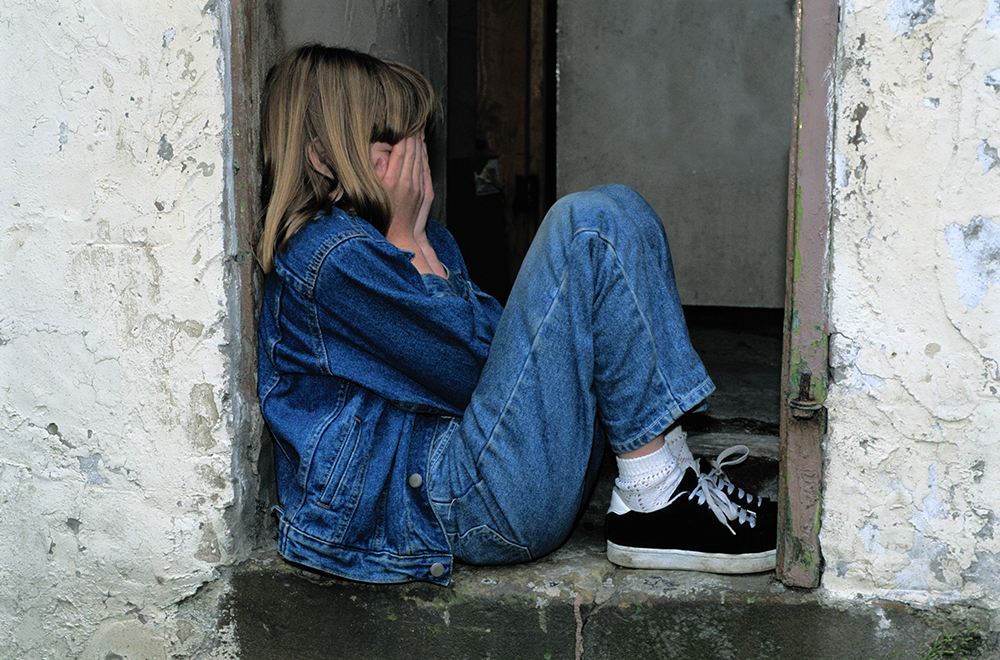
Pixabay
.
NEW YORK — All cars used to come equipped with cigarette lighters. Those lighters got really hot. Jon found that out the hard way when he was nine, waiting for his parents outside a Waldbaum’s in New Jersey. His older brother depressed the lighter until it was nice and hot, then convinced Jon to touch the middle. He screamed in pain.
“I think that was one of the first times he tested his power, to see what he could make people do,” said Jon, who asked only his first name be used out of sensitivity for his parents. “He was trying to make it clear that ‘I’m up here and you’re down there.’”
School and peer bullying has recently gotten a lot of attention, especially with the rise of social media and cyberbullying. But now psychologists and youth professionals are also focusing on the bullying that can happen within families, between siblings, and finding that this phenomenon is surprisingly common and just as harmful, if not more.
For example, a February 2018 study published online in Psychological Medicine, suggests that victimized siblings are three times more likely to develop a psychotic disorder. The same team of psychologists, from the University of Warwick and other universities in the U.K., have previously published research suggesting that being bullied by a sibling could double the odds of both depression and self-harm in adulthood.
All in the family
Unlike peer bullying, sibling bullying can hijack the entire family dynamic, no matter the victim’s age. Sibling bullying can be physical, emotional, psychological or sexual. Even if survivors move far away from their abuser as adults, psychological and emotional wounds still need to heal.
While the act of abusing a brother or sister isn’t new, in the past few years experts have begun to shed light on the problem.
 “We’re recognizing this stuff as abuse,” said Dr. Vernon Wiehe, an emeritus professor at the University of Kentucky College of Social Work, who was among the first to bring attention to the dangers of sibling abuse. “In our own evolution, people are becoming sensitive to these things.”
“We’re recognizing this stuff as abuse,” said Dr. Vernon Wiehe, an emeritus professor at the University of Kentucky College of Social Work, who was among the first to bring attention to the dangers of sibling abuse. “In our own evolution, people are becoming sensitive to these things.”
The subject of family violence used to center around spouse abuse, elder abuse and adults abusing children. But a fourth category came to light in the 90s — sibling abuse — when Wiehe started publishing his first books based on his research.
Jon says he was mainly psychologically and verbally abused in his youth. His brother would often call him a loser, fat and worthless. Jon even showered in a state of panic knowing his brother was waiting outside to call him names and grab his stomach. Now 38, he struggles with mental wellness and the lasting effects of his childhood trauma. After years of warped interactions, things like healthy interpersonal relationships don’t come easy.
“I’m not where I should be — a lot of depression, anxiety, confusion, very little experience with people,” said Jon, who still lives in New Jersey. “There’s a lot of regrets, a lot of anger and a lot of missed opportunities.”
Jon’s parents didn’t intervene, which is common, and they never condemned his brother’s behavior. Parents often play a role, either by setting the example of abuse or classifying abusive behavior as typical “sibling rivalry.” Familial imperfections are taboo and bad behavior can be misinterpreted as “growing pains” by parents.
When parents can’t or won’t step in, it may fall to a youth leader or professionals to get involved. Magistrate Geoffrey A. Gaither of Marion County Superior Court in Indianapolis has had sibling abuse cases cross his desk that vary in nature, ranging from sexual to physical to emotional.
“I can’t say that anyone I know has developed a checklist or protocol or a criteria of when it’s most likely to happen,” says Judge Gaither, who’s been assigned to the Juvenile Division for almost 25 years. “Often issues between siblings are the manifestation of a primary overall problem.”
When parents aren’t able to do what’s necessary to protect their children, Gaither says there’s hope at the youth leader level with successful intervention programs. It might be different per child, per family, per episode, but often the first thing in a youth professional’s toolkit is a psychological evaluation.
Gaither says it’s important to zero in on the primary problem at hand and eliminate other issues — if it’s a low-grade mental health issue, sometimes it can be solved with a little bit of medication and counseling. On the other hand, sometimes it’s best that the children are separated until a resolution can be reached.
Programs that work
The second part of the equation is access to programs that work — and more importantly access to the people who work the programs — be it services for kids, parents, or families as a whole. Gaither says the success of those programs is often based on the connection between the counselor and the family, one human being to another. The bond must be built upon mutual understanding, openness, honesty, transparency, respect and a meeting of the minds.
“We have binders full of programs,” says Gaither. “Not a single one will work if I can’t get the kind of person who can relate to the person that’s drowning, and relate in such a way that there’s trust. Trust is the currency of the realm.”
Primary problems are unique to each family, but could stem from a lack of moral leadership at the parental level, one parent households, issues of neglect or abandonment, substance abuse, untreated mental health issues, impulse control or anger issues. Gaither says generally the younger sibling will become the punching bag when another sibling doesn’t know how to process their feelings in a positive way, or when another sibling has witnessed domestic violence and believes it’s an appropriate way to deal with discipline, conflict resolution, love and other emotions.
Abuse awakened
Laura Corbeth, now in her 50s and living in Ontario, says her older brother started abusing her before the age of five, but she didn’t significantly struggle with mental health issues as an adult. She got married, started a family and launched a successful marketing business. Then her aunt died, and she and her brother reunited to settle the large estate. It was a trigger.
“I started to see the old behaviors — mind games, sabotage, smear campaigns, the twisting of truth, the manipulation, the gas lighting,” said Corbeth. “The situation blew up.”
Suddenly, she started showing symptoms of anxiety and PTSD that she couldn’t control. At times she couldn’t breathe or talk. It took her by surprise, because she had been fine all those years prior. She was ultimately diagnosed with complex post-traumatic stress disorder (CPTSD).
“If you asked me all the intricate details of my past — I don’t remember everything,” she said. “But my body remembers. My reactions remember.”
Sibling bullying also differs from peer bullying because of children’s unique needs from parents, age difference and being confined under one roof. When bullying happens in the space that’s supposed to be the safest, the effects can be much more devastating than the playground.
“The whole sibling thing, is a family thing,” said Corbeth, reflecting on her childhood. “I realized that I had no protection and I had parents that were completely complicit to the bullying that I was going through.”
Bullies feel safe abusing siblings
Dr. Noshene Ranjbar, whose many leadership titles include medical director of the University of Arizona’s Whole Child and Integrative Psychiatry Clinics, says siblings are the safest people to show aggression to and verbally put down.
“They’re right there, they’re accessible and they’re safe — they know each other and they feel the sibling will take it,” said Ranjbar. “They’re not going to go anywhere.”
While closing the estate, Corbeth confided in her mother about the revelations regarding her brother. Afterwards, her mom continued to enable her son, which shocked Corbeth.
“You find that not a lot of people want to speak up about sibling abuse because you’re not to expose family,” said Corbeth. “There is a protection of the abuser.”
Corbeth’s mother no longer speaks to her, but Corbeth is speaking to the world.
She recently re-released a book titled “My Courage to Tell: Facing a Childhood Bully and Reclaiming My Inner Child” that chronicles her experiences and shares information about sibling abuse that she’s collected from psychologists and doctors. She’s part of an era starting to speak openly about sibling abuse.
Jon has been in and out of therapy through the VA, but he says nothing really sticks. Now living in Israel with a family of his own, his brother expressed remorse recently. Jon isn’t interested in rebuilding a relationship, but is glad his brother eventually heard his voice.
“The most important thing is to have them not feel like ‘I’m the victim, there’s nothing that can be done, I’m the only one that feels this way and nobody will understand’” said Ranjbar. “The longer that feeling stays, the harder it is to heal.”





























